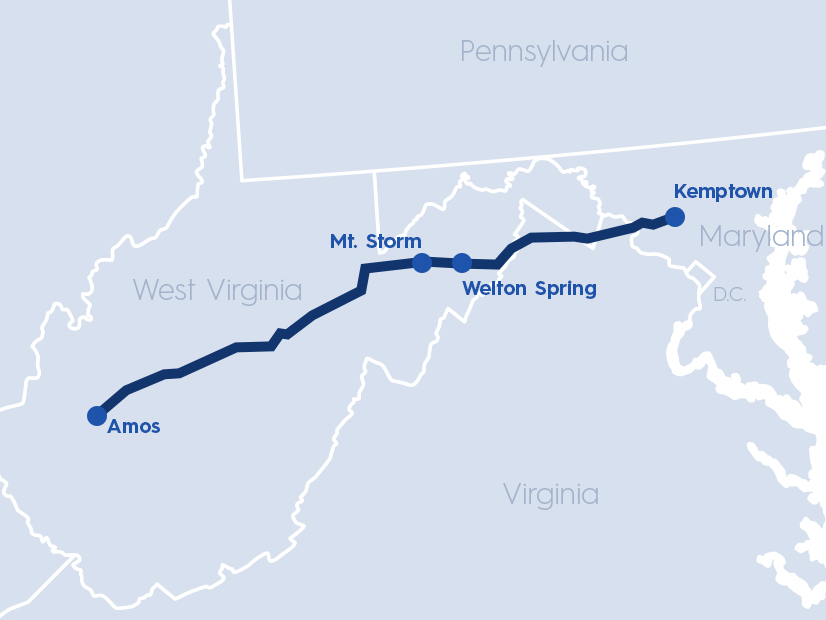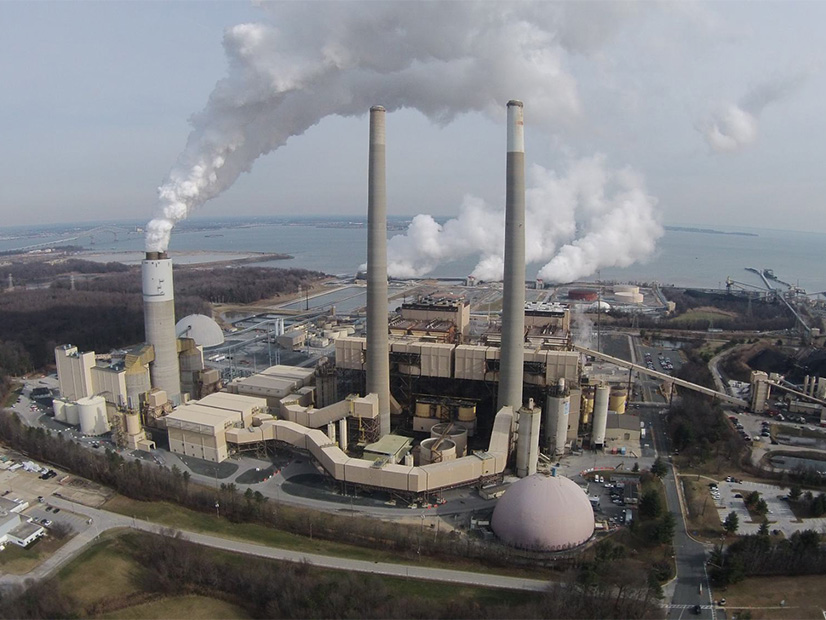
FERC Commissioner Mark Christie used orders on two transmission projects to blast the commission’s “ridiculously generous” incentives.
FERC Commissioner Mark Christie on Dec. 19 used orders on the canceled Potomac-Appalachian Transmission Highline (PATH) project and a $785 million reliability project in PJM to blast the commission’s “ridiculously generous” incentives for transmission developers.
Christie wrote in a concurrence that FERC policy gave him no alternative but to approve an abandoned plant incentive for three Exelon subsidiaries assigned to build $785 million in transmission to address reliability problems expected from the scheduled closure of Talen Energy’s Brandon Shores coal-fired plant in Pasadena, Md. The incentive allows the utilities to recover all “prudently incurred” costs if the project is canceled for reasons outside of their control.
But he used his concurring statement to renew his call for the commission to reevaluate that incentive as well as the construction work in progress (CWIP) incentive and the RTO participation adder (ER24-163).
Christie also concurred with the commission’s approval of an uncontested settlement in the 15-year dispute over the abandoned PATH project, saying it cost ratepayers $250 million, although it was never approved by any of the three states in which it would have passed and “even though not a single ounce of steel was ever put in the ground” (ER12-2708, et al).
Christie said the CWIP incentive “effectively makes consumers the bank for transmission developers,” while the abandoned plant incentive “effectively makes them the insurer of last resort.”
“This incentive allows transmission developers to recover from consumers the costs of investments in projects that fail to materialize and thus do not benefit consumers,” he wrote. “Just as consumers receive no interest for the money they effectively loan transmission developers through CWIP, they receive no premiums for the insurance they provide through the abandoned plant incentive if the project is never built.”
The RTO participation adder, which increases the transmission owner’s return on equity (ROE) above the market cost of capital, “is an involuntary gift from consumers,” Christie added. “There is something really wrong with this picture.”
Looking ahead to 2024, Christie wrote, “as this commission considers other potential reforms related to regional transmission planning and development, it is imperative that incentives like the CWIP incentive, abandoned plant incentive and RTO participation adder are all revisited to ensure that all the costs and risks associated with transmission construction are not unfairly inflicted on consumers while transmission developers and owners stand to gain all the financial reward.”
Exelon’s Baltimore Gas and Electric, PECO Energy and Potomac Electric Power Co. (Pepco) requested the abandoned plant incentive to build the transmission upgrades that PJM said are needed to address thermal and voltage violations that would result from Talen’s plan to close Units 1 and 2 of Brandon Shores on June 1, 2025.
The utilities sought assurances they would be made whole if Talen withdraws its deactivation notice and either continues to operate the units or sell its injection rights to another developer. They also said the project could be undermined by transmission planned to deliver New Jersey and Maryland offshore wind generation.
Exelon also cited the risk of opposition from landowners, noting the project will require the acquisition of about 50 acres of land in Pennsylvania for new and expanded substations, 1.25 miles of expanded rights of way in York County, Pa., and new facilities within existing rights of way in Maryland, requiring approvals from regulators in both states.
Christie urged the commission to act on proposals to limit the RTO participation adder to the three years following a utility’s initial membership in an RTO (from its 2021 supplemental Notice of Proposed Rulemaking) and to eliminate the CWIP incentive (in its April 2022 transmission planning and cost allocation NOPR).
“It is clear to me that the commission’s procedures and criteria for awarding the abandoned plant incentive should also be reconsidered,” Christie wrote. “In short, revisiting all these incentives is imperative at a time of rapidly rising customer power bills.”
PATH Settlement
Christie also concurred on the PATH settlement, which the developers said “will facilitate the final wind-down and termination of the PATH companies.” (The commission directed PATH to notify it within 60 days whether they were withdrawing petitions for declaratory orders in dockets EL18-186 and EL18-187 that are not resolved by the settlement.)
Christie said the settlement was significant because of the “major lessons — and warnings — it holds for long-term regional transmission planning driven by policy goals, the substantial costs that go with such projects and how FERC’s policies inflate those costs to consumers.”
He said the commission’s formula rate structure, which gives developers a presumption of prudence when they file for cost recovery, “facilitated this assault on consumers, as it does regularly.”
He also said PATH illustrates “the inherent dangers in approving for regional cost allocation long-distance projects based on a prediction (i.e., a guess) of what the generation mix will be in 20 years or more,” noting that PATH was originally part of “Project Mountaineer,” a plan to deliver mostly coal power over three high-voltage lines from West Virginia to East Coast load centers.
“The lesson here is clear: For policy-driven long-distance, regional transmission projects affecting consumers in multiple states, it is absolutely essential that state regulators have the authority to approve — or disapprove — the construction of these lines and how they are selected for regional cost allocation and what that cost allocation formula is, if their consumers are going to be hit with the costs,” Christie wrote.
The settlement, which was supported by FERC staff, calls for PATH to continue to use its current 8.11% ROE until its formula rate is terminated and payment of $9.5 million in refunds to customers. (See DC Circuit Reverses FERC on PATH Refunds.)
Also approving the two orders were Chair Willie Phillips and Commissioner Allison Clements. James Danly, who attended his final meeting as a commissioner Dec. 19 and is presumed to be job hunting, did not participate. (See Secretary Bose and Commissioner Danly Honored at Their Final FERC Meeting.)



